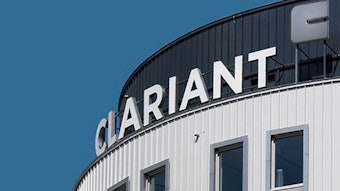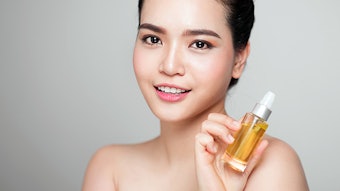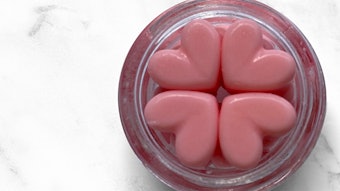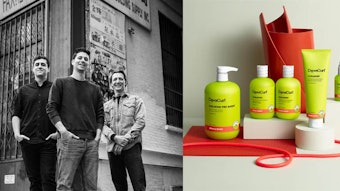The worldwide cosmetics and toiletries market was estimated at more than $200 billion in 2003, with an annual growth rate of about 5%.1,2 Comparatively newer markets such as China and India are developing faster. In the Western world, tactics such as product differentiation based on age groups, sex, race, and specific skin and hair conditions within each market segment also assisted growth. More importantly, technological innovations and continuing development of the upper mass-market segment influenced growth. However, product innovation within the context of these growth drivers remains central to success in the global cosmetics and toiletries industry.
This is especially important in a mature market such as the United States, where the spiraling impact of a weak labor market has reduced consumer confidence and prices have been driven down through intense competition among retailers. For example, national retailer chains in North America have launched more aggressive ad campaigns to attract specific groups of consumers—as evident in the August 22, 2005, issue of New Yorker in which Target Inc. was the sole advertiser.
Facing price pressure from giant retailers, leading cosmetic manufacturers have focused on counter measures to sustain long-term growth through strategic consolidation and in-depth, continuous, integrated innovation programs. Innovation is driven primarily through Consumer Experience and Relation Management (CERM),3 but there also is a focus on cost savings in manufacturing, design, R&D and marketing. From a competitive standpoint, the focus on attracting customers comes from brand differentiation, quality and connection with consumers. The goal is better management of customer relations and experience and, thereby, base retention.
Companies must use innovation to bring newer and better products to the consumer at lower costs. Frequent product design changes are required to meet competitive pressures, and time-to-market is especially important because of the competitive advantage and the improved recovery of development costs that result.
From a product design perspective, the cost of perfecting any product design and often the associated delay in time-to-market outweighs the merits of such a product. From the business standpoint, a “perfect” product is much less rewarding than the optimum product that meets the demands of the development cost and time criteria and helps both customer base retention and promotion.
Thus, given the needs for innovation and reducing time-to-market, advanced technology tools such as Computer Aided Engineering (CAE) have been relied on very heavily. CAE complements and often reduces the load on plant trials and experiments, particularly in terms of product design and process scale-up, trouble-shooting, retrofitting and optimization. Embedding CAE throughout the entire engineering and product development streams yields significant prospect for financial and competitive advantages in the marketplace.4–6
The current focus in the cosmetics and toiletries industry is on innovation. Innovation is not just R&D, and it does not happen overnight. As a business grows to maturity, organizations go through parallel maturity curves on consumer-space, internal-culture, technology and toolsets. Adoption of evolving technologies, along with reliably and cost-effectively embedding them in the innovation process, is key to optimizing time-to-market as well as improved product quality control. Early adopters have made significant progress in integrating modeling and simulation as a front-line tool to drive innovation in both their most recent distributed application R&D and their core platform technology areas.
Companies such as L’Oréal and P&G are the forerunners in this context.2,3 As more and more industry giants reorganize with simulation-enabled engineering, the marriage of simulation technologies with their traditional process technologies based on trials and experiments is creating a win-win situation. Nevertheless, it requires an icebreaker case study tailored to a specific corporate setup to illustrate the potential for net cost-saving as well as identify the prospects for strategic improvement in time-to-market.7,8 Such an illustration helps create the environment to influence the value chain in adjacent vertical product lines.
Acknowledgements
The authors would like to thank Armstrong Inc. and acknowledge contributions from their current and former colleagues at Fluent: Andre Bakker, Liz Marshall, Lanre Oshinowo, Ahmad Haidari, Eric Grald and Rafi Khan.
References
- The Euromonitor Report on the Worldwide Market for Cosmetics and Toiletries, 2004: www.euromonitor.com/article.asp?id=4018
- Mindbranch market research Web links: www.mindbranch.com/catalog/product.jsp?code=R154-1075, www.mindbranch.com/catalog/product.jsp?code=R136-2799, (Accessed Aug 14, 2005)
- “The First Moment of Truth”—Dina Howell, Director of the First Moment of Truth Business Team, P&G, Branding 360°, Annual conference, Chicago, March 2–4, 2005
- www.clarkson.edu/news/view.php?id=1236 (Accessed Feb 14, 2006)
- KS Brown, Supercomputers Tackle More Everyday Tasks, Yahoo Finance on the Net—Investor’s Business Daily, June 22, 2005
- Manufacturing by Computer Simulation, Automation World, Oct. 2004, p. 36, www.automationworld.com/articles/Features/932.html (Accessed Feb 14, 2006)
- Two Moments of Truth, www.sgi.com/pdfs/3413.pdf (Accessed Feb 14, 2006)
- T Branna, Ever innovative Estée Lauder: the prestige market leader has a plan to boost speed-to-market and create even more cutting-edge products, Household & Personal Products Industry, June 2002










